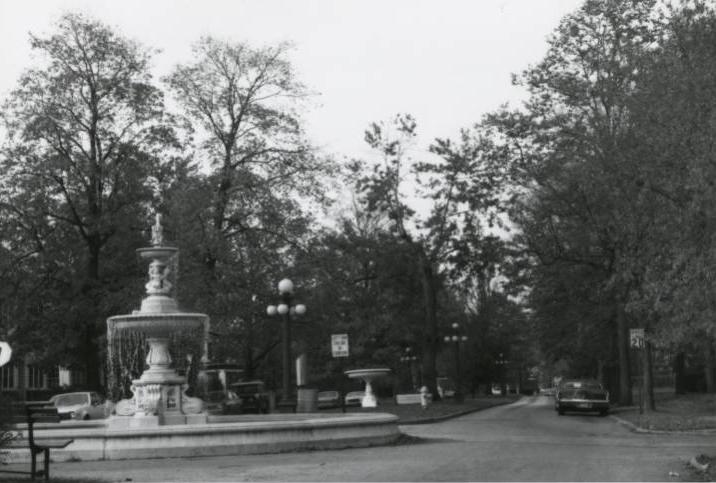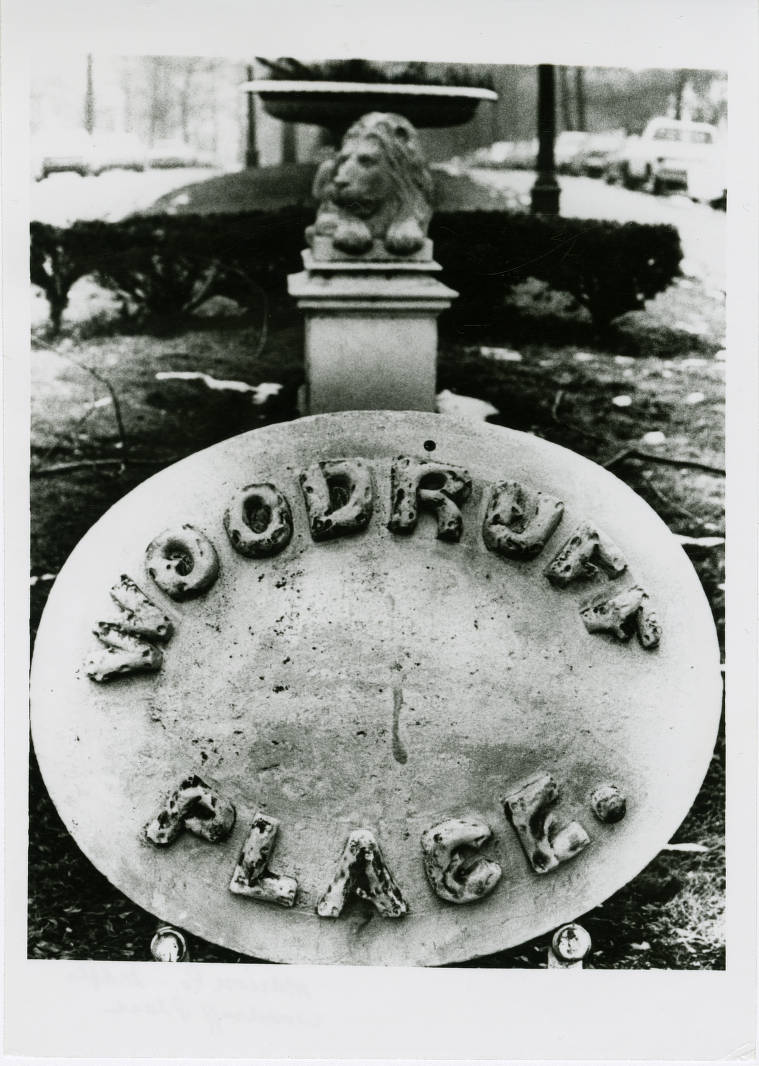Woodruff Place is a near eastside subdivision, bounded by East 10th Street, East Drive, East Michigan Street, and West Drive.

James O. Woodruff came to Indianapolis in 1869 to start the city’s first water company. In 1872, he purchased 80 acres east of Indianapolis and platted Woodruff Place. He laid out three boulevards—West, Middle, and East drives—with one intersecting street, Cross Drive. The three main drives were bisected by esplanades containing cast-iron statuary and nine multitiered fountains.
Three fountains are located at the intersections of Cross Drive and West Drive, Middle Drive, and East Drive. Two additional smaller fountains are in the mid-block on each drive. The Cross Drive fountains reportedly are the oldest in Indianapolis. Concrete fences lined the northern edge of the town, creating a sense of seclusion and separation from the larger city nearby. Walking Woodruff Place’s tree-lined streets became a popular form of entertainment for Indianapolis residents.
The Panic of 1873 bankrupted Woodruff and, within a few years, forced him to move from his Woodruff Place home. However, in 1876, he led the initial property owners in a successful petition to incorporate the area as a town. Because it had neither schools nor police and fire protection, Woodruff Place residents contracted with Indianapolis for these services. In the 1890s, the town experienced a building boom. Homes in the area were constructed in a variety of popular architectural styles, including Eastlake-Stick, Edwardian, and Queen Anne.
Homeowners were primarily, though not exclusively, affluent. The Amberson Addition in Indianapolis author ‘s novel (1918) was modeled after Woodruff Place. Designer , the son of painter , created the plans for the homes at 798 and 811 East Drive.

Following World War I, Woodruff Place began a gradual decline as wealthy families left the town to move to the more high-end northern suburbs. The Great Depression caused further decline when many of the remaining residents could not afford to maintain their large Woodruff Place homes. Following World War II, many of the larger dwellings were subdivided into apartments.
Attempts by the City of Indianapolis to annex the town began in the 1890s. By the 1920s, the town was surrounded by a metropolis. In 1953, the city began charging Woodruff Place $25,000 for police and fire protection, hoping to force the residents to succumb. The town successfully resisted annexation until 1962, fighting the city to the Indiana Supreme Court and appealing that court’s decision to the U.S. Supreme Court, which refused to hear the case. Finally, on March 20, 1962, residents turned over the key to the Woodruff Place town hall to the City of Indianapolis.

Beginning in the 1970s, new residents moved into the neighborhood, renovating the large, old homes. On July 31, 1972, Woodruff Place was added to the National Register of Historic Places. In the 1980s, the Woodruff Place Civic League was formed to preserve a sense of community among the area’s 1,100 residents, a mission that the group continues to strive for to this day. Some of the community’s 300 homes remain divided into apartments, but many have been renovated as single-family residences. The Civic League uses funds from activities, such as the annual Woodruff Place flea market and a biennial home tour, to restore and maintain the neighborhood’s statuary and fountains.
The area was designated as one of the city’s in 2001.

Help improve this entry
Contribute information, offer corrections, suggest images.
You can also recommend new entries related to this topic.